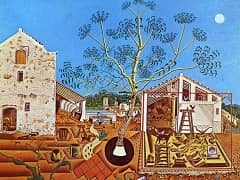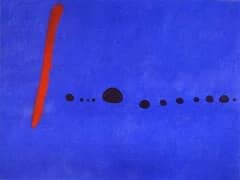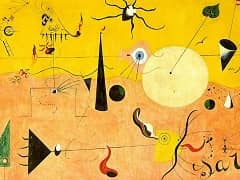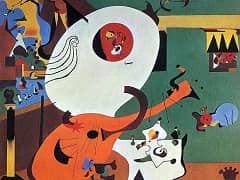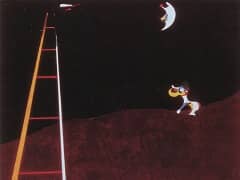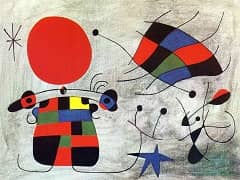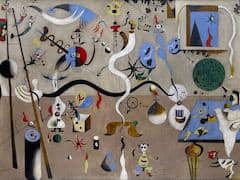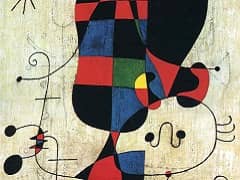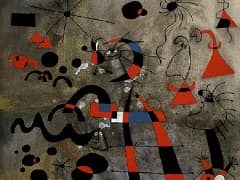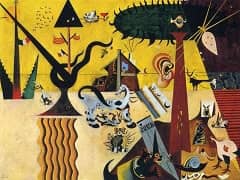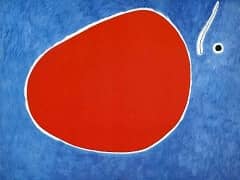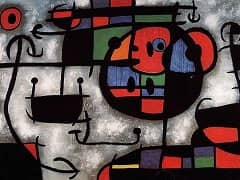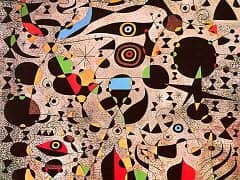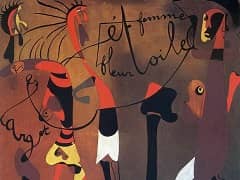The Gold of the Azure, 1968 by Joan Miro
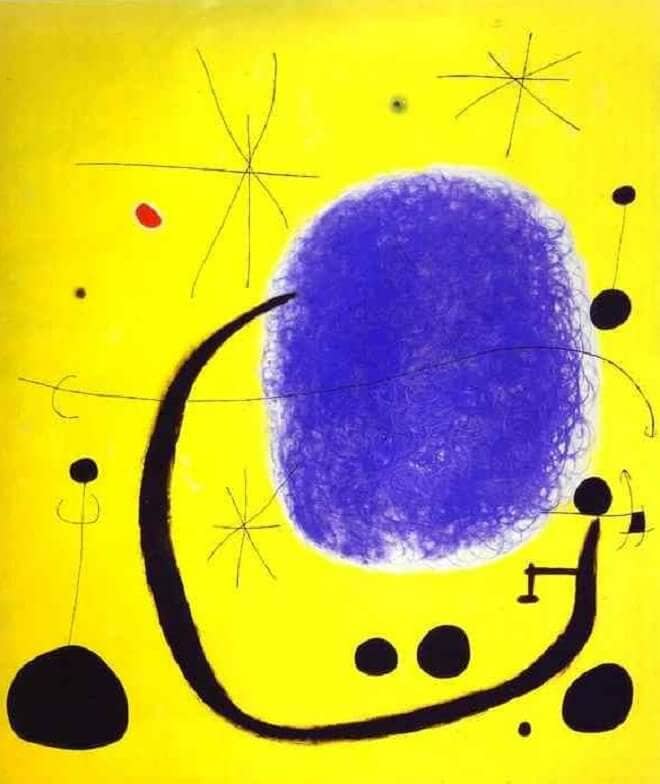
The Gold of the Azure, 1967 has a wonderfully poetic quality about it, reminiscent of Asian art. Set against a light yellow surface, with a few white gaps to allow the canvas to "breathe", a number of stars and lines - as fine as hair - have been distributed, as well as some sombre, black dots, pardy connected by some very fine lines.
A huge black sweeping movement lunges into the blue shape on the right. This shape, however, has not been painted on the yellow surface - which would have given it a distinct tinge of green - but has been inserted into an oval gap on the white canvas. The red dot in the top left corner has been painted in the same way. Thus these two colours keep their balance against the strong forcefulness of the yellow. A tiny green spot hovers above the blue oval, demonstrating a different method of painting - a gentle merging into the paint while it was still wet so that a blurred effect could be achieved. Furthermore, the blue shape has been painted with the circling movements of a semi-dry paintbrush so that the white surface has remained faintly visible and is particularly in evidence around the edge. The painting refuses to yield to any further description of its content or to any fixed interpretation. Its poetic effect is dependent on the balance of its colors, the composition of symbols as well as its complex structure as regards artistic techniques. It is from the artistic means alone that Miro developed a "content", without, however, creating a totally abstract painting. In his pictures of the 1960s Miro continued to develop his symbolic language with increasing elementary force and colorfulness.

